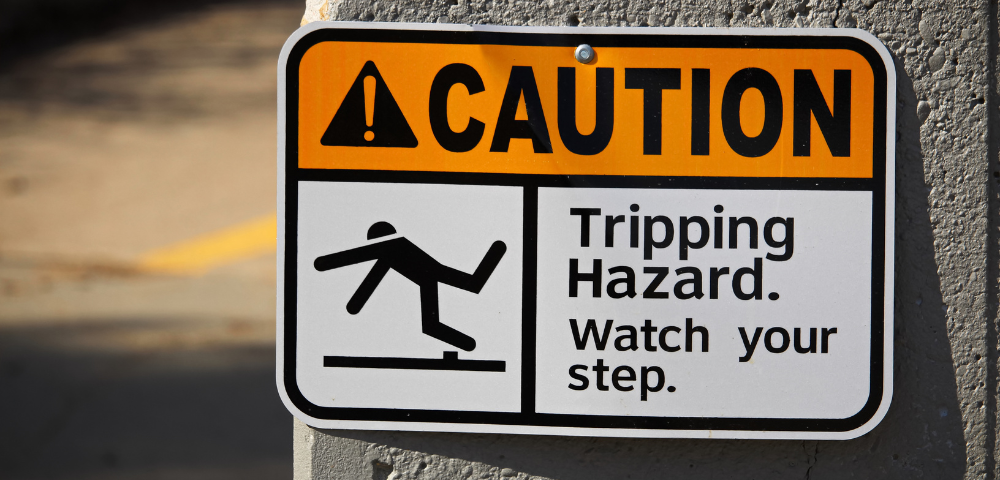5 Steps to Risk Assessment

Understanding and implementing effective risk assessment is a legal obligation of health and safety in the workplace. It might seem like a tedious task but it’s crucial to ensure the safety of your employees and your business.
Risk Assessment in the Workplace
In the workplace, a risk assessment is a careful examination of what could cause harm to people in the work environment. This could include anything from a trip hazard in an office to chemical exposure in a factory. The goal is to determine whether enough precautions have been taken or whether more should be done to prevent harm.
The International Labour Organization estimates that 2.3 million people die every year from work-related accidents and diseases, which underscores the importance of risk assessments to be done in the workplace regularly.
Who Should Carry Out a Risk Assessment of the Workplace?
The responsibility for carrying out a risk assessment typically falls to the employer or the person in control of the premises. The responsibility can also be delegated to a competent person within the organisation who has:
- The necessary knowledge and experience of the work activities
- The ability to identify hazards and evaluate risks
- The knowledge of current best practices in risk control
- The ability to develop safe systems of work
In some cases, especially for complex or high-risk environments, it may be necessary to bring in an external risk assessment consultant with specialised expertise.
What Are the 5 Steps in a Risk Assessment?
While there can be variations in how risk assessments are conducted, the most widely recognised approach involves five key steps. These “5 steps to risk assessment” provide a structured and comprehensive method for identifying and managing workplace risks.
The 5 Steps to Risk Assessment:
Step 1: Identify the Hazards
Identifying potential hazards is the critical first step in any risk assessment process. In the workplace, a hazard can be defined as anything with the potential to cause harm. Physical hazards, such as machinery, heights, and noise, are often the most visible. Chemical hazards arise from cleaning products and industrial chemicals, while biological hazards include exposure to viruses and bacteria. Even ergonomic hazards, like repetitive motions or poorly designed workstations, can lead to long-term health issues. Equally important, though often overlooked, are psychosocial hazards such as workplace stress and bullying.
Recognising the full spectrum of these potential dangers is crucial for creating a comprehensive and effective risk assessment.
How to identify hazards effectively:
- Conduct a thorough workplace walkthrough
- Review accident and near-miss reports
- Consult with employees about their concerns
- Check manufacturers’ instructions for equipment
- Consider less obvious hazards like long-term exposure to harmful substances
Step 2: Determine Who Might Be Harmed and How
Once hazards are identified, the next step is to determine who might be affected by these hazards and in what way. This step helps prioritise risks and tailor control measures.
Different Groups to Consider:
- Different groups of workers such as new employees, night shift workers or maintenance staff
- Visitors and contractors
- Members of the public (if applicable)
- Vulnerable individuals such as pregnant women, young workers, or those with disabilities
For each hazard, think about:
- The type of harm it could cause
- The potential severity of the harm
- How many people could be affected
Step 3: Evaluate the Risks and Decide on Precautions
After identifying hazards and who might be harmed, it’s time to evaluate the level of risk and determine appropriate control measures.
Risk is typically calculated as: Risk = Likelihood of Occurrence × Severity of Harm
When deciding on precautions, follow the hierarchy of control:
- Elimination: Remove the hazard completely
- Substitution: Replace the hazard with a less dangerous alternative
- Engineering controls: Isolate people from the hazard
- Administrative controls: Change the way people work
- Personal Protective Equipment (PPE): Use as a last resort
Step 4: Record Your Findings and Implement Them
Documenting your risk assessment is not just good practice—it’s often a legal requirement. A well-documented risk assessment serves as evidence of due diligence and provides a reference for future reviews.
Your risk assessment record should include:
- The hazards identified
- Who might be harmed and how
- The current control measures in place
- Any additional controls required
- Who is responsible for implementing the controls
- Timelines for implementation
Step 5: Review Your Assessment and Update if Necessary
Risk assessment is an ongoing process. Workplaces change, new equipment is introduced, and work practices evolve. Regular reviews ensure that your risk assessment remains relevant and effective.
When to review your risk assessment:
- Annually, as a minimum
- When new equipment, substances, or procedures are introduced
- After significant changes to the workplace or work practices
- Following accidents or near misses
During the review, consider:
- Have there been any changes in the workplace?
- Are the control measures working effectively?
- Have any new hazards emerged?
- Can improvements be made?
FAQS About Risk Assessment
- Is a risk assessment a legal requirement?
Yes, in many countries, including the UK, risk assessments are a legal requirement for businesses. According to the HSE, “You have a legal duty to assess the risks to the health and safety of your employees (and risks to the health and safety of persons not in your employment) to which they are exposed while they are at work.”
- How often should risk assessments be reviewed?
At minimum annually, but also whenever there are significant changes in the workplace or after any incidents.
- Can employees conduct risk assessments?
Yes, employees can conduct risk assessments if they are competent to do so. However, the ultimate responsibility lies with the employer to ensure that risk assessments are completed.
- What is the difference between a hazard and a risk?
A hazard is something that can cause harm, while a risk is the likelihood that harm will occur from a particular hazard.
- Do I need to keep records of my risk assessments?
A: If you have five or more employees, you are legally required to keep written records of your risk assessments. Even if you have less than five employees, it is recommended to keep records in case an employee requests them.
By implementing effective risk assessments, businesses can not only comply with legal requirements but also reap significant benefits. Take the time to conduct thorough risk assessments in your workplace. Your employees’ safety and your business’s success may depend on it.
Do you need any further information on how to proceed with risk assessments? Reach out to CQMS and find out how we can help take your employee’s safety to the next level.




